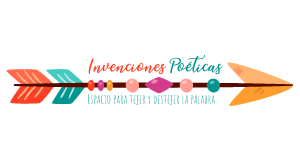
KunManga Comics are works of art in which a creator expresses ideas in a story through images. They often combine images with text or other visual information, usually in a series of panels. Textual devices, such as dialogue or narration, add to the story, and sometimes include sound effects. This article will discuss some of the most common elements of comics.
Feature And Run
In comics, there are two major types: series and one-shot comics. A series is a collection of consecutively numbered issues featuring the same character or story. It may be ongoing, a miniseries with a set number of issues, or it may consist of one issue and one or more back-up stories. A one-shot comic, on the other hand, is one issue with no subsequent issues.
In comics, a single issue may consist of multiple frames or panels. This helps create a sense of space and time. Some panels may have no frame, and others are so large that they act as welcome panels. Comics also use gutters, or the space between panels, to help the reader understand and interpret what’s happening.
Panels
Panels in Manga4life comics are important tools for the storyteller, allowing them to move between scenes and develop a sense of pacing and movement. Often, they are used to highlight specific objects or actions. When using panels in comics, be sure to experiment with different kinds of panels to find the best balance.
Panels can take many shapes, but most often take a square or rectangle shape. However, they can also be round, trapezoid, or freeform, and they can overlap or be different sizes. When deciding how many panels you need, experiment with different panel sizes and layouts.
Paralinguistic Cues
In our daily lives, we make use of a wide range of non-verbal forms to express ourselves, including paralinguistic cues. One example is the use of emoticons and speech balloons, which selectively convey emotional information to the receiver. While these cues are not as strong as verbal cues, they can be helpful in enhancing text-based communications.
Comics use paralinguistic cues (PFs) to communicate meaning. These include kinetic and vocal features, as well as gestures and facial expressions. While these features are hard to convey visually, they may be appreciated by interpreting the context and the characters’ attitudes.
Interplay Between Text And Image
MangaComics are multimodal texts that engage in a dynamic interplay of visual and semiotic resources. By using multiple visual modes in their creation, comics can cross-fertilize their influences and convey a range of meanings to readers. In this article, I will consider some of the most common word-image relationships that are found in comics.
In comics, the visual track of the narrative discourse is a crucial element. The use of word balloons juxtaposes text and image and carries forward the narrative. Text usually explains what is going on in the story, but can also be impressionistic or emotional commentary. In addition, the text can be near or far from the narrative.
Minicomics
Minicomics are small, creator-published comic books. These publications are usually hand-bound or photocopied. In Europe, they are known as small press comics. They typically measure A6 in size or less. In the United States, minicomics are typically created and distributed by individual creators. However, some creators make large-scale comic books that are published in larger format.
Minicomics are self-published publications with limited print runs. They developed from the underground comix movement of the 1960s, where many of today’s comics creators honed their craft. Artists like Raina Telgemeier began their careers by creating minicomics and selling them at conventions. Her next book will have an initial print run of one million copies.

















